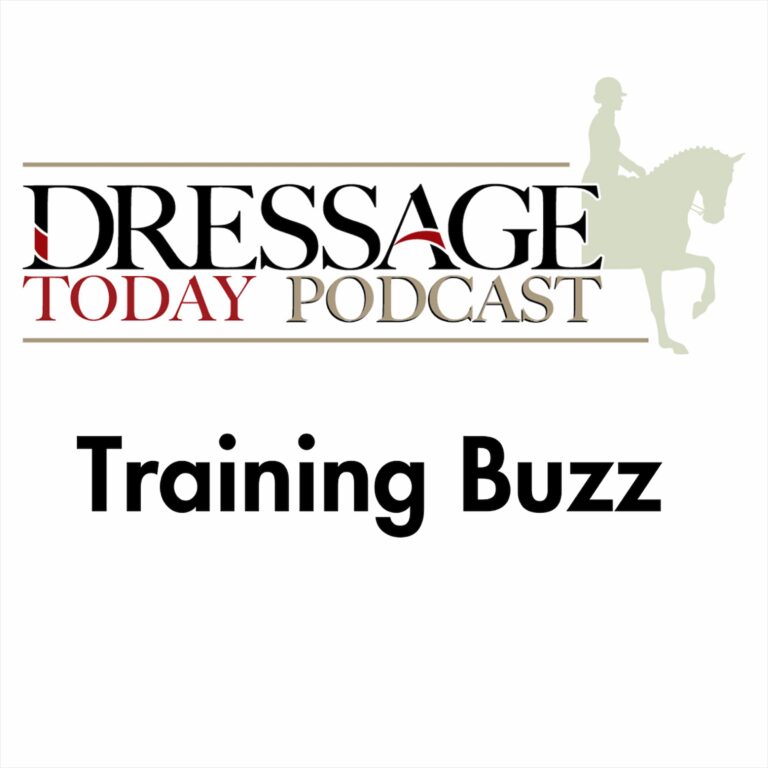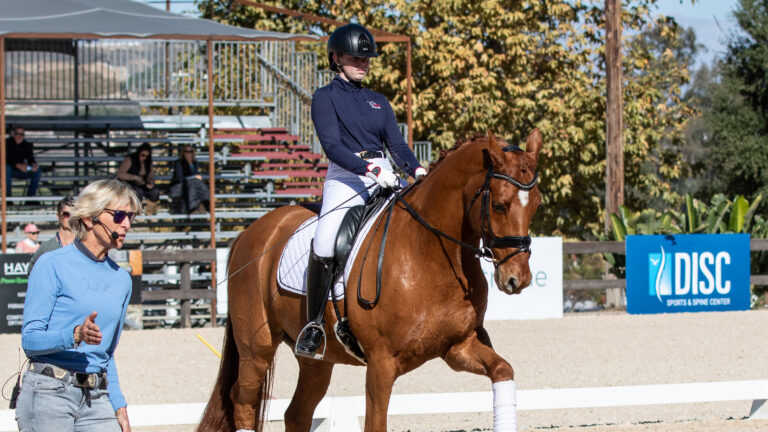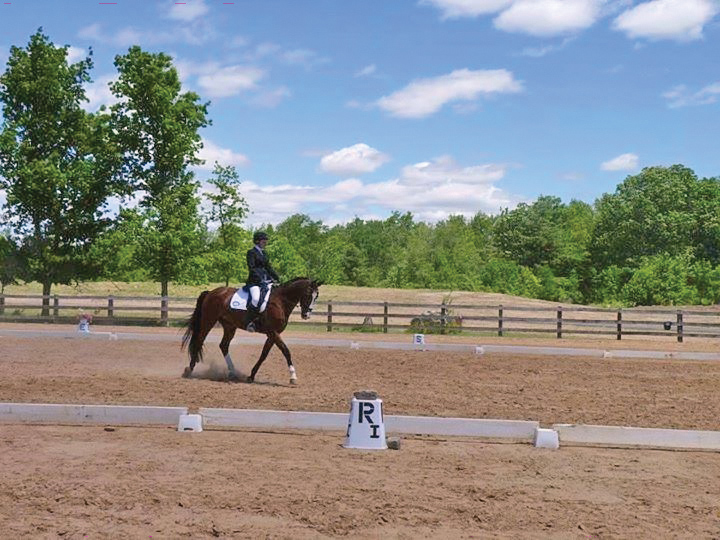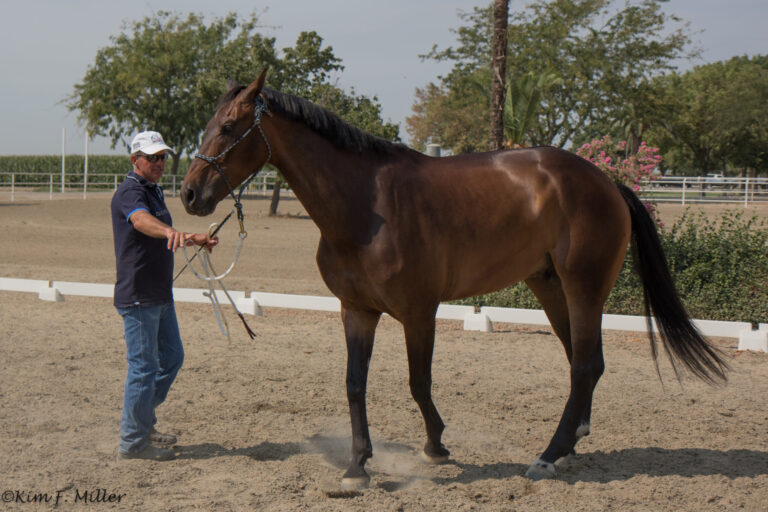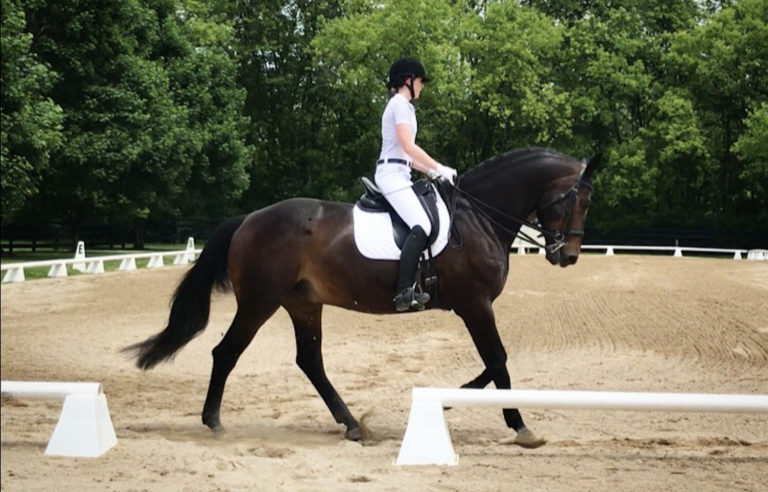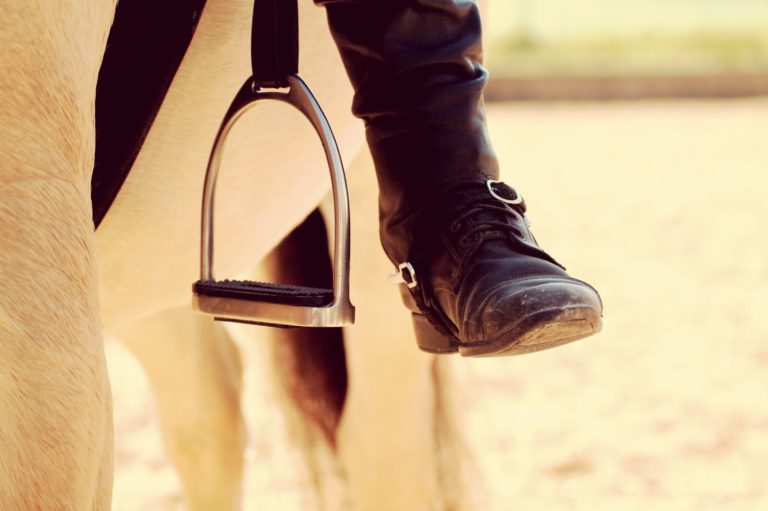Learning to sit the trot effectively and to appear relaxed and in harmony with the horse is perhaps one of the biggest challenges in the world of dressage. Many of today’s dressage horses have big, bouncy trots that can be daunting for even experienced riders with supple seats. It is, however, very important that every rider develop her ability to sit the trot in order to influence the horse effectively during the trot work. So think of sitting trot as proactive rather than reactive.
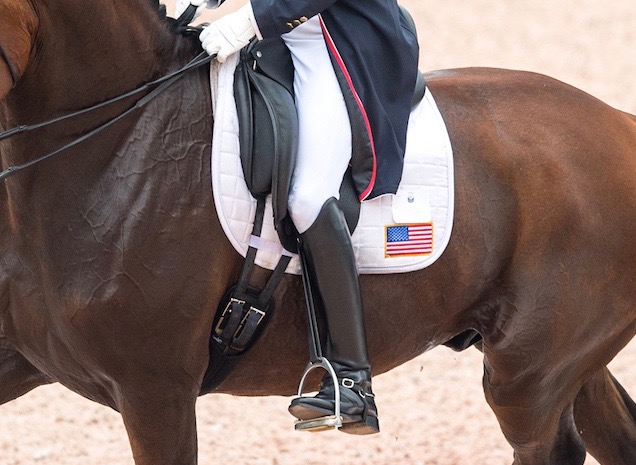
The first step a rider must accomplish is the correct position in the saddle. You want a tall, correctly aligned body position, a supple waist and strong abdominal muscles. The upper body must be very straight and placed directly over the hips. A viewer should be able to draw a straight line from the rider’s ear through the shoulder and hip to the heel, and that line should be exactly perpendicular to the ground.
The pelvis should be centered in the deepest part of the saddle and balanced between the two seat bones and the pubic bone. (If too much weight is placed on the seat bones, the rider will be behind the motion and behind the vertical with her upper body; if too much weight is placed on the pubic bone, the rider will be perched on her crotch and tipped forward.) Sit as tall as possible. While lightly balanced on the seat bones and pubic bone. Your back should be close to flat and your head carried over nicely squared shoulders and a raised an open chest.
Once the seat is balanced, the rider needs to open the angle between the hip and thigh allowing the legs to drop down almost vertically from the hip. It is the open angle between the hip and thigh that will enable the rider to use her hips to influence the trot. This open angle also will lead to the softly draped long leg that is advantageous in many ways. In this position, the rider is correctly balanced and properly aligned to ride the sitting trot.
To ride the sitting trot, the rider must make her waist supple—not loose and floppy, but elastic and supple. The very slight pelvic motion involves pushing the pelvis down and toward the hands through relaxation of the waist and abdominal muscles. The timing of the motion is critical—the rider must straighten as the horse begins the stride and then push down and slightly forward just before the completion of the stride. In this way, you can “bounce” the next stride with your seat, just by allowing yourself to relax down into the saddle.
You can get the feeling of the pelvic motion while dismounted: Stand against a straight wall with your heels, hips and shoulders touching the wall, and your knees slightly bent. Place your hands over your tummy, just below your navel. Using your abdominal muscles, push your back toward the wall—this is the “straightening” phase of the sitting trot. Relax your abdominal muscles toward your hands and allow your back to fall away from the wall—this is the relaxing or “pushing down” phase of the sitting trot. At no time should you grind your seat bones into the saddle to try to sit more “into” the horse—this is uncomfortable for the horse and counter productive.
Once a rider has the timing and strength to follow the motion of the gait, she will be able to change the trot strides wit just a little more emphasis on the pelvic motion—straighter and taller for a shorter, bouncier stride and more down and forward for lengthening the stride. Influencing the trot involves “riding the stride,” rather than going with the motion. The rider must be balanced and poised in the saddle and able to anticipate the stride. When this is done correctly, she is very slightly ahead of the motion of the trot, and by being slightly ahead, has a good opportunity to influence the size and shape of the next stride. So, rather than following the motion of the trot, a rider can lead the motion of the trot, thereby staying in balance and harmony with the horse.
This article first appeared in the November 2004 issue of Dressage Today.
Liz Steacie placed second in the 1999 Canadian World Cup League Final. She is the FEI rider representative on Dressage Canada’s High Performance Committee. She and her husband, Adam, own and operate Porcupine Hill Dressage, a training and sales facility in Brockville, Ontario.


